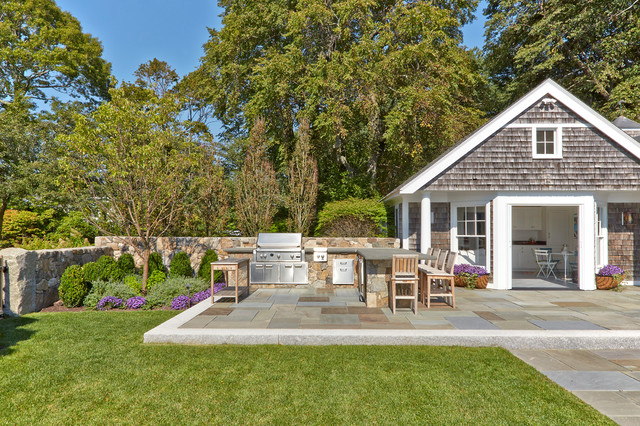
Consider your space, entertaining style and outdoor living needs when determining your outdoor kitchen’s configuration.
kitchen’s functionality and fun factor.
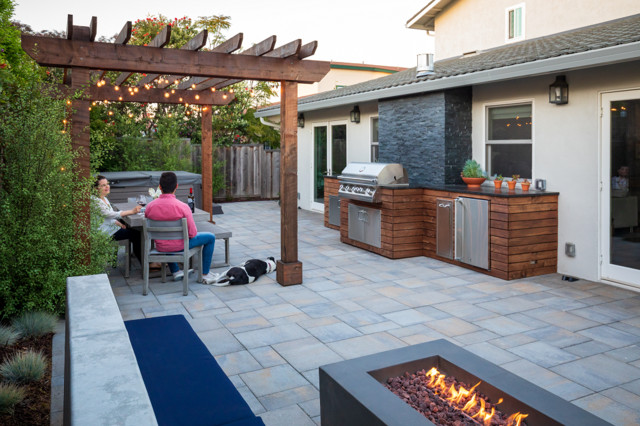
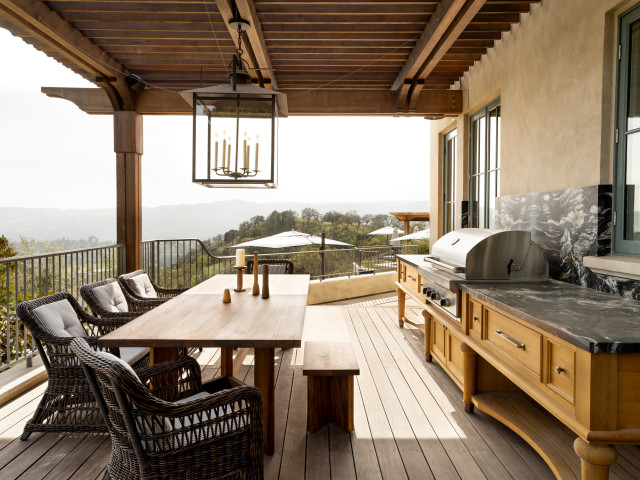
Take your layout cues from indoor kitchens. Think about efficient work triangles and access for both cooks and guests. Layout options range from a single counter-and-grill combination to an elaborate multisided installation.
Remember, unlike indoor kitchens, you usually won’t have four walls to define the space. Instead, you’ll use the countertops and cabinets to create the “room.”
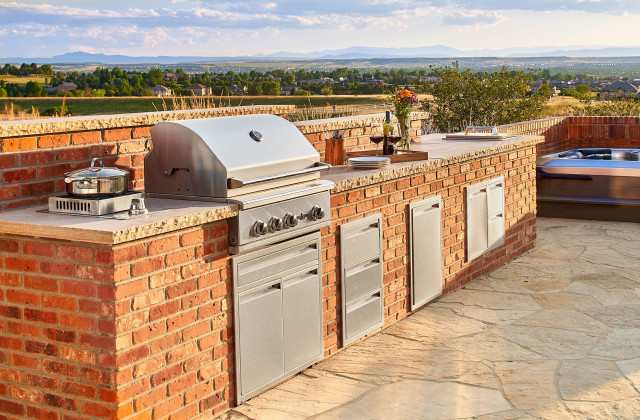
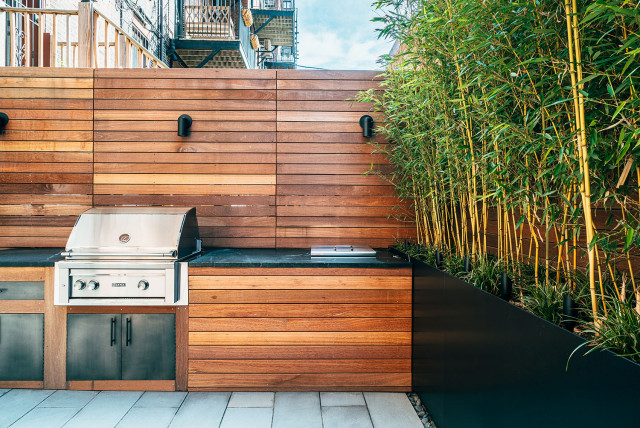
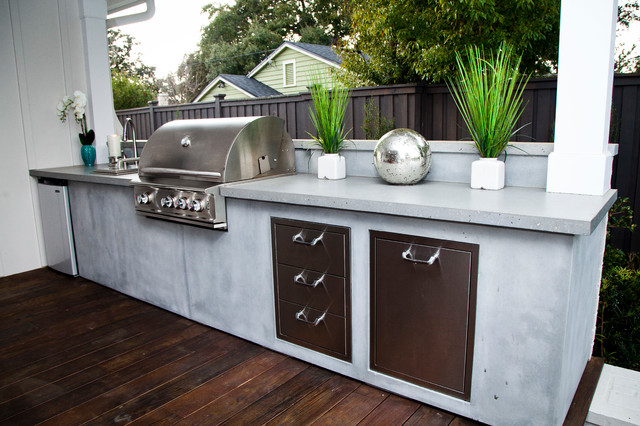
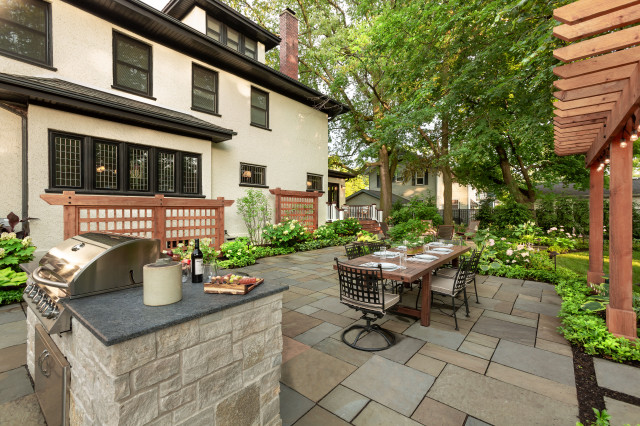
Island kitchen. A similar approach would be to install a barbecue island, which is a better design for including the cook in the action. “You want the cook to be able to engage with family and friends,” says John Algozzini of KD Landscape in Chicago. These standalone grill stations or all-in-one kitchens are open on all four sides, allowing easy access for both the cook and other guests.
Setting an outdoor kitchen island at the edge or along one side of your dining area ensures that the cook will have a great view. You aren’t limited to only a grill and some counter space for an island, especially if you do a custom design. You can add appliances and extend its length or width to allow for dining space.

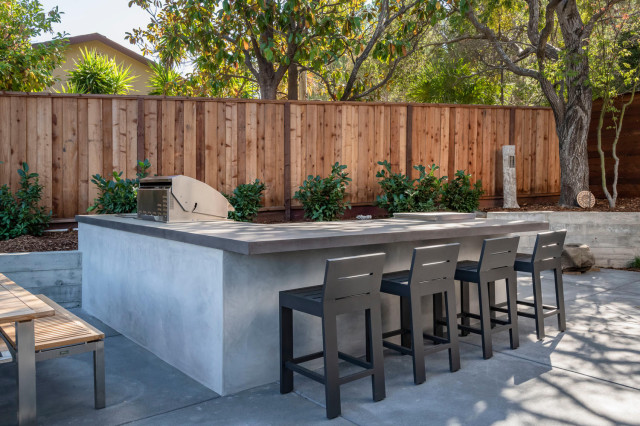
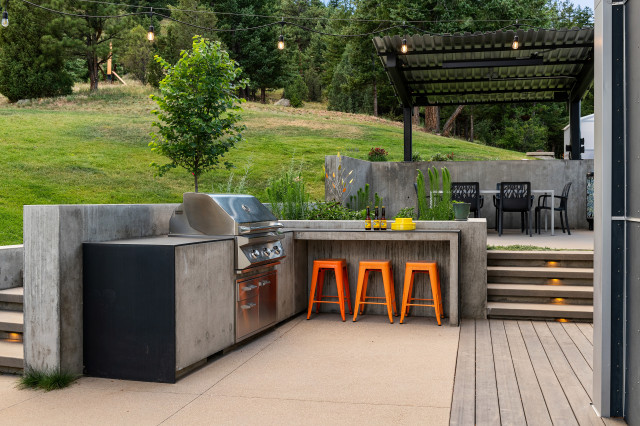

U-shaped kitchen. A U-shaped layout is highly efficient, providing plenty of workspace and counters for serving and eating as well as plenty of storage. A small interior space is ideal for a single cook, putting everything within reach. If more people will be joining in, make it larger so people can easily work together.
A small U-shaped kitchen may feel like a separate space within your overall patio or entertaining area, turning it into a destination. If you’d prefer something more inclusive, you might want to opt for an L-shaped kitchen.


Outdoor Kitchen Measurements to Keep in Mind
Your outdoor kitchen spaces should be comfortable for both the cooks and the guests. Keep reading for some size and measurement guidelines to consider when you’re adding an outdoor kitchen.

Countertops and bars. Your countertop length will vary, depending on your overall space and the amenities you want to add. “We typically say the minimum length for a kitchen would be 6 linear feet, which gives room for a grill and to have a counter area on both sides,” says Rob Douglass of Texas Custom Patios in Houston. The counter can also double as a landing space for anything you pull from an undercounter refrigerator.
- Width: The recommended width for a basic countertop is 24 inches, although you may want to go wider if you’re planning to use it as a dining spot. A minimum width for a bar top would be 12 inches, with an added 12 to 18 inches if you want an overhang. The overhang itself should be no more than one-third the total width of the bar.
- Height: The standard height for a working countertop is 36 inches. A height of 30 inches may be more comfortable for dining with standard-height dining chairs. If you don’t want a counter that is too low, consider raising the height and using slightly taller stools or chairs. Bar-style countertops are usually from 42 to 48 inches tall, although they can be higher.


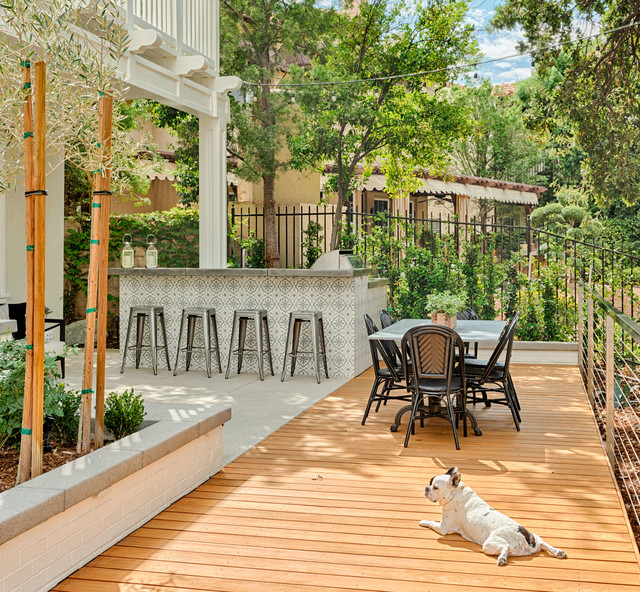
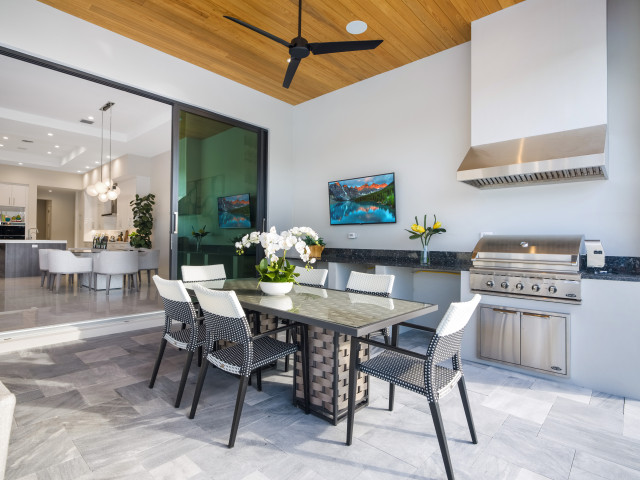
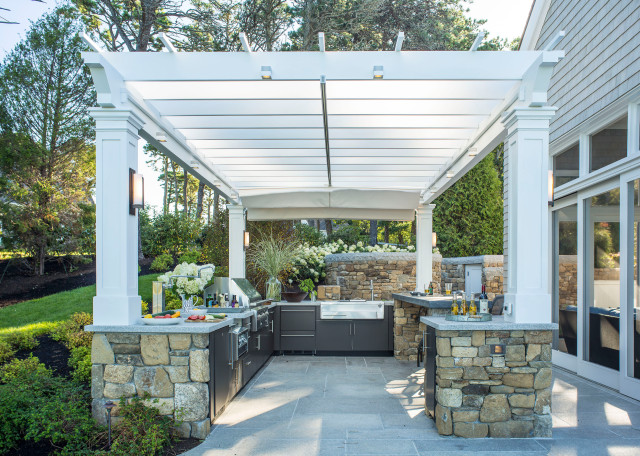
Other Considerations for Your Outdoor Kitchen’s Size and Layout
The last step is to decide where everything will go in the kitchen during the planning stage to be sure you have the space you need. The placement of the grill is paramount in any kitchen. It should be easy to get to and have countertops on either side. If you’re adding a refrigerator or snack area, place it at one end of the kitchen so it’s easily accessed without getting in the way of the cook.
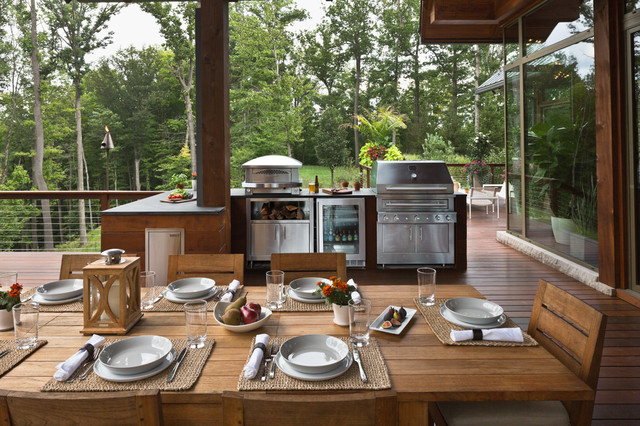



Getting Your Outdoor Kitchen the Right Size
Your kitchen’s size will depend on your available space, how you plan to use it — from family time to large gatherings — and what you want to include. For a small yard or patio, you’ll want to look at more efficient and simple layouts, such as a linear layout or an island. If you have more room, an L-shaped or U-shaped layout can help you make the most of your outdoor